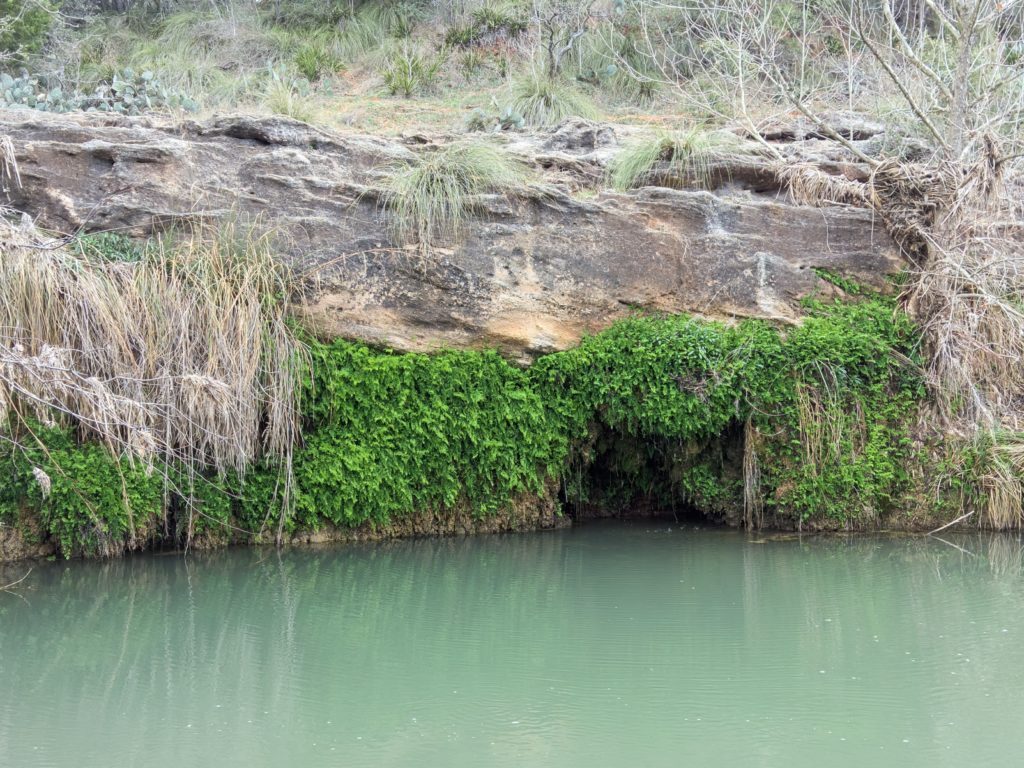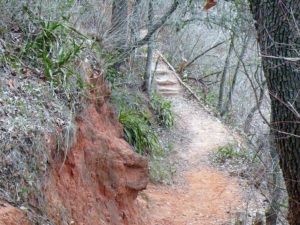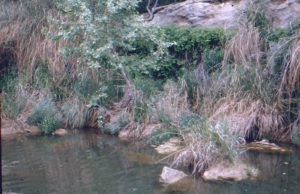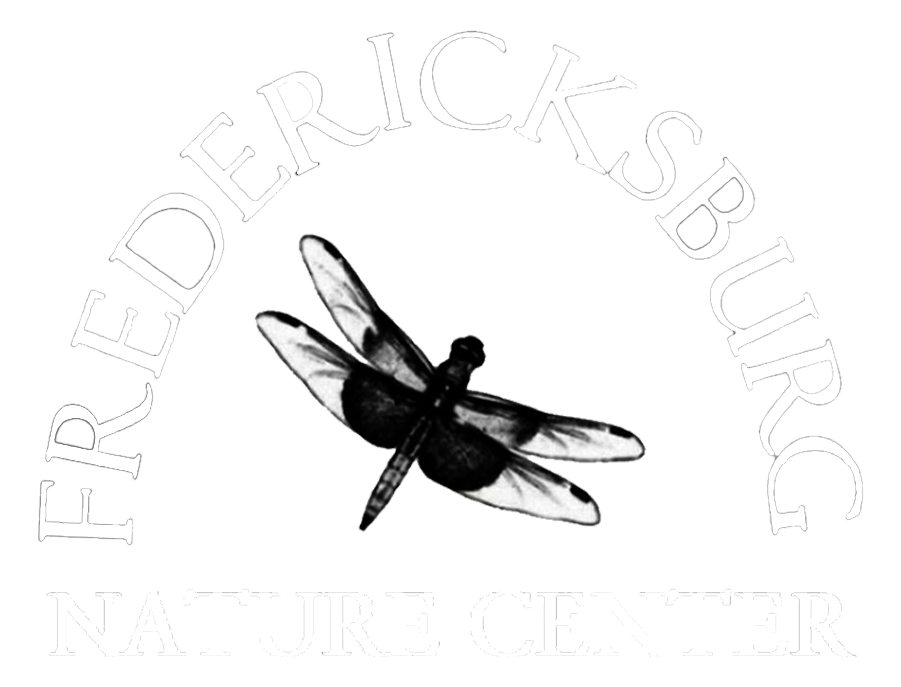Lady Bird Johnson Municipal Park lies in the Texas Hill Country area and is part of a larger region called the Edwards Plateau where all of the surface rocks are Cretaceous in age, roughly 135 to 65 million years before present. During this period of time Planet Earth as in warming mode. Sea level was rising and the shorelines were encroaching on land masses, such as the Llano Uplift area just to the north of Fredericksburg where igneous and metamorphic assemblages of rock were cropping out in a moderate topographic terrain. Fluvial systems were transporting the decomposing granites, schists and gneisses to the coastal plain of the Gulf of Mexico. Beach deposits of this age can be found as close as Comfort, Texas.

The sandstone outcrop at the grotto area on Live Oak Creek was one of these fluvial systems that coalesced to make up the Hensell Formation of Lower Cretaceous age. The Hensell sandstones are one of four aquifers occurring in Gillespie County and the soils derived from the weathering sandstones make up the vast majority of the excellent farm land in the area. While all of this sedimentation was going on, dinosaurs were likely living in the associated woodlands flanking the streams, not too unlike the vegetation surrounding Live Oak Creek today. Looking at the cross stratification in the sandstone bed at the grotto indicates the stream was flowing southward, as is Live Oak Creek.
During floods in Lower Cretaceous time, the finer-grained sediment was deposited in the flanking floodplain. An excellent outcrop of the dark red claystone occurs along the Live Oak Wilderness trail in the lake bank portion of the trail. The hard red rocks represent an old soil horizon in the floodplain. This outcrop occurs between two small tributary stream sandstone channels that cause topographic rises in flat lakeside trail. On the Vista Loop trail there is excellent outcrop of fine grained sediments that filled the main stream channel when the course of the main channel shifted to another location. The ancient sediments likely represent silts and clays of an oxbow lake.


All of the post Hensell Formation rocks of Cetaceous age have been eroded from the Park by streams of the Pedernales River system. This missing section is well represented by the strata found at Cross Mountain City Park on the north side of Fredericksburg just west of RR 965.The sedimentary rocks are part of the Glen Rose Formation of shallow water marls and limestones. Some geologists think the top of Cross Mountain may be part of the Edwards Formation.
The youngest geologic section in Lady Bird Johnson Municipal Park is of Recent age, measured in a few thousands of years before present, and represented by sands and gravels deposited by an ancestral Live Oak Creek. These rocks are best observed in a cliff face near the stairs on the Live Oak Wilderness trail. Prior to the formation of the Park, gravel was mined where the dammed up lake occurs today. At the top of one of topographic rises on the lakeside portion, one can observe Recent sediments resting unconformably on the Cretaceous red floodplain rocks. This time gap in the rock record represents over 110 million years.



